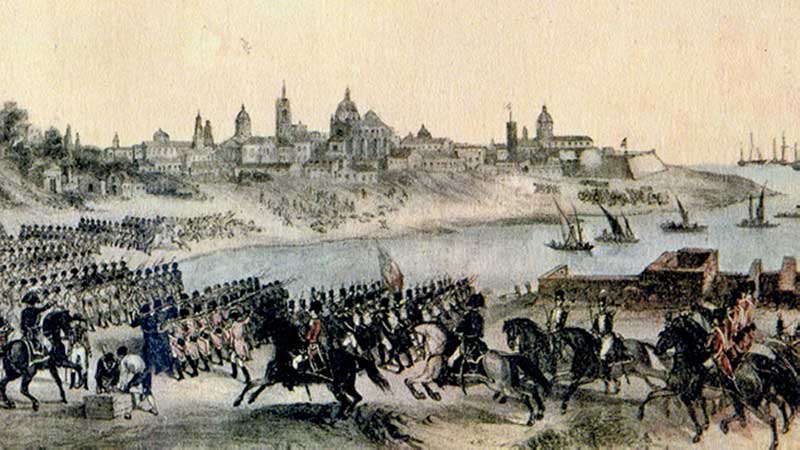Based on some reflections by Alberto Methol Ferré
Article by Rocco Buttiglione
This piece is in no way an exhaustive examination of the meaning of Pope Francis' pontificate, neither for the universal Church nor for Latin America. Rather, it focuses on a source of Jorge Mario Bergoglio's thought, Alberto Methol Ferré, and only in an exploratory manner.
Toward the late 1970s and then up to the first half of the 1990s, I took part in the intense debate sessions of a group of Italian (Francesco Ricci, Alberto Metalli, and myself) and Latin American intellectuals (Alberto Methol Ferré, Lucio Gera, Jorge Mario Bergoglio, Juan Carlos Scannone, Hernán Alessandri, Pedro Morandé, Joaquín Alliende, Guzmán Carriquiry…), which later on revolved around Nexo magazine. Years later, various circumstances caused me to become deeply involved in Italian affairs, which prevented me from following the subsequent developments that led to Aparecida do Norte and the present. Inevitably, my reflections are colored by the context of those years. They also rely to a large extent on personal memory. Alberto Methol was a great conversationalist, but he published very little, at least while alive. However, Guzmán Carriquiry has informed me that he wrote a great deal, but in a scattered fashion, and that now this huge literary legacy is nearing publication. What I am about to sketch here is based not on writings, but on my memories of the long and passionate conversations that we held in the 1980s and that still live on in my mind. These conversations are part of a wider debate in which all of our Nexo friends were involved, particularly Jorge Mario Bergoglio.
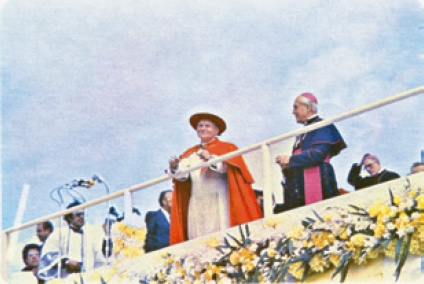
"Liberation theology sought to articulate a Latin American theology based on the experience of the Latin American people. However, this effort remained mired in the last remnant of intellectual dependence in the Old World: Marxist analysis. St. John Paul II put an end to this confusion in Puebla, 1979."
Puebla
Toward the late 1970s and early 1980s, I started visiting Latin America to talk about the Polish Pope, and about Solidarnosc some time later. This was the time when the Puebla Conference was being prepared, a process in which Alberto Methol played a major role. He immediately saw the Polish Pope as a sign of the globalization of the Catholic Church. “Catholic” means “katá olon,” according to the totality. The Church has had the ability to become global since its foundation, and effects the globalization of the spirit that must precede (and guide) the process of political and economic globalization. Globalization is not a single but a dual process; for this reason, it is pointless to be either for or against globalization. Rather, it is necessary to ask ourselves which globalization we are talking about. Is it a disorganized process in which the globalization of the spirit precedes and guides that of politics and the economy, or is it an economic one that consummates the spiritual substance of all peoples? In an organized globalization, the role of politics cannot be ignored. Politics uses (or should use) the energy of globalization to rule economic globalization. To do so, current politics must have a continental scope. The ordered construction of the unity of the human family comprises several stages: […] in our time, it requires the construction of continental political realities, which are the only ones capable of safeguarding the cultural identities of peoples and nations in the globalization era. This is the source of Methol's interest in geopolitics and his passionate love for the idea of a “big Latin American homeland.” Only the “big homeland” can keep the small homelands from being shaken by purely economic globalization, which causes them to lose their identity and reason to exist; however, the construction of the “big Latin American homeland” has another meaning that I will discuss in more detail in a later section. Catholic modernity is one full historical phase behind in comparison to Protestant modernity, precisely because it has not managed to construct the United States of Latin America. In the rivalries between the many small homelands, in the struggles between the ports and the inland regions, which are key to understanding much of Latin American history, English imperialism looms large, dooming Latin America to cultural and political subordination.
In the Second Vatican Council, the Catholic Church took up the challenge of globalization. The Polish Pope is the Council's son.
After Medellín, the Latin American Church had already initiated its path toward globalization, thus reasserting its aspiration to become a Church/mother rather than just a Church/reflection or peripheral Church (a distinction formulated by Lima Vaz, a Brazilian priest whose thought was closely related to the reflections presented here). The mother Church is a mature and missionary organization that thinks about the advent of the Christian faith in its own history and in connection with the Christian experience of its people. The Christian advent is unique. It took place in Palestine about two thousand years ago, and yet it is represented, in the life of the Church, through the presence of its saints, who are not only those placed on altars, but all those who have embodied faith in their lives. By entering history, this advent converged with the liberation of all peoples, becoming a constitutive factor of their identity and of their path toward liberation. Liberation theology sought to articulate a Latin American theology based on the experience of the Latin American people. However, this effort remained mired in the last remnant of intellectual dependence in the Old World: Marxist analysis. St. John Paul II put an end to this confusion in Puebla. For him, it was not only possible, but also necessary, to develop a Latin American theology. The Pope's view confirmed the mother Church status of the Latin American Church while encouraging it to be more self confident as an institution and as a part of its region, and to purify its analytic instrumentation through a comparison with the notion of justice that emerged in the heart of Latin Americans through evangelization. In Latin American history, this idea connects with the Guadalupe event and becomes established with the reassertion of the rights of all men articulated by Bartolomé de las Casas and other defenders of indigenous Americans. This is the origin of the authentic school of thought of Latin American liberation.
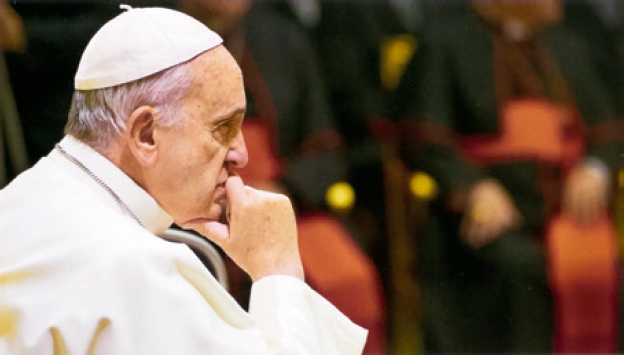
"Latin America required not a Marxist revolution, but a Christian one. Maybe the idea of preparing a Christian revolution of justice and solidarity in Latin America, using totally novel, unimagined, and undefined methods and approaches, is a relevant clue to understanding Pope Francis' pontificate".
Solidarnosc: history and destiny of the workers' movement
Solidarnosc was one of the topics that fascinated Methol in the 1980s. Francesco Ricci and I had a long experience regarding Polish affairs. Also, in the Nexo circle, we were frequently asked to provide news and explanations of what was going on in Poland. Methol saw two things in Solidarnosc's struggle. First, the struggle between Catholicism and Marxism. In his opinion, this was mainly a struggle for the leadership of the human liberation movement, which has historically been embodied by the workers' movement (I think that a major influence on his view of the workers' movement was Duroselle's book about the history of the Social Catholic movement in France). This movement emerged as a Christian force that challenged the egotism and materialism of capitalist society upon the basis of the moral perspective of the Gospel and the rights of human beings. The predominant theme of this first Christian stage of the workers' movement is the violation of the transcendent dignity of human beings. During a later stage, Christians lost control of the movement, which was conquered by anarchists. The goal of anarchists is a society of equals, with no God or boss. Anarchists wish to be atheists, but cannot. Marx explains why in a beautiful little book against Proudhon entitled The Poverty of Philosophy. Anarchists place absolute justice, a divine attribute, on God's seat. Anarchism is rooted in extreme anti-clericalism rather than atheism, since its fundamental mindset is inspired by natural law. In this context, Methol highlighted the semi-eucharistic origin of the word "companion": a person with whom we share bread. Even though Marxists gained control of the movement's intellectual and political direction at a later stage, for the masses and the working class –as far as their spontaneous views and ideology were concerned– it continued to be essentially anarchic and inspired by a Christian notion of natural law.
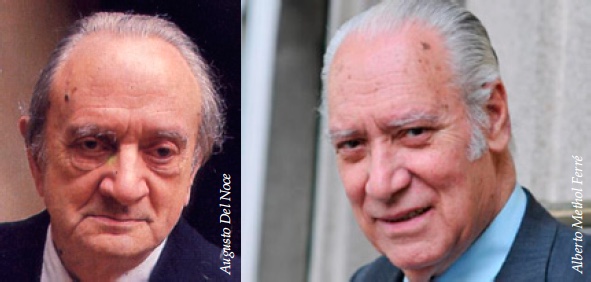
"I remember that when I met Methol I was deeply impressed by his big admiration for Del Noce. (…) Methol and Del Noce agreed that the main defect of Catholics' involvement in politics was that they lacked a historical interpretation of their own".
In Latin America, Marxist hegemony in the workers' movement has always been precarious and anarchic elements remain quite active. There was also a strong Christian component in the CLAT [Latin American Workers' Organization]; likewise, in Argentina during the Peron era, the workers' movement, originally anarchic, acknowledges the influence of Christian social doctrine.
Solidarnosc inaugurated a new Christian stage in the history of the workers' movement. Marxism failed, and its failure eliminated the conviction that history and the development of productive forces inevitably lead to Communism and freedom from alienation. Productive forces appear to develop much better in a market economy than in a Communist system; also, Communism does not free humans from alienation, generating its own form of alienation instead. Protests against Communist alienation, like protests against economically-efficient capitalism, can only be of an ethical nature. With Solidarnosc, the Catholic Church went back to leading the struggle for liberation. While the risk of liberation theology was the subordination of Christianity to Marxism, the philosophical meaning of the advent of Solidarnosc is precisely the opposite: the struggle for liberation can only be guided by Christian thought. Marxism crumbles: in the domain of materialism, it loses against the vulgar materialism of capitalism; in the domain of the struggle for human liberation, it loses against Christian social doctrine. This view is wholly opposed to that of the apologists of capitalism, who thought that the end of Marxism extinguished the very reason behind the existence of the workers' movement. For Christian social doctrine, the defect and guilt of Marxism lie in having misrepresented and exploited workers' suffering and protests against the injustices endured; however, this suffering and injustice existed before Marxism and continued to exist after it failed. The Christian social movement must now take up the challenge of representing workers' struggle for liberation during this new stage of the history of humankind. This view differs from that usually expressed by St. John Paul II during his papacy. The struggle of St. John Paul II against communism took place in parallel to the struggle between capitalism and communism, but the two processes cannot be identified with one another. Only this realization will enable us to understand why, immediately after the fall of communism, St. John Paul II began to denounce the ills of Western society with renewed energy.
Methol's conclusion was that the process that had begun in Poland should continue in Latin America. The novelty of Solidarnosc, which was a key element of the novelty of John Paul II's pontificate, could not bear all its fruit in Poland. The urgency of economic reconstruction inevitably drew Poland to the orbit of West European consumerism. The rupture that had started in Poland had to continue in Latin America, much like the rupture initiated by the Paris Commune eventually led to the October revolution. Latin America required not a Marxist revolution, but a Christian one. Maybe the idea of preparing a Christian revolution of justice and solidarity in Latin America, using totally novel, unimagined, and undefined methods and approaches, is a relevant clue to understanding Pope Francis' pontificate.
Nevertheless, the Christian revolution of justice and solidarity is radically different from the Marxist one and from a certain notion of revolution that took root after the French Revolution. It is nonviolent and speaks to its adversary's consciousness; thus, it is a democratic revolution. This revolution is not an enemy of the market, however, it is aimed at subordinating the animal spirits of the market to ethics. It is a revolution that can only occur upon the basis of a spiritual and oral renewal that precedes and accompanies it. It is a revolution not wholly centered on the State; instead, it seeks to restore civil society's voice and strength.
Marxism considered that production methods, given the materialistic basis of the relations of production, would give way to the liberation of the working class. Actually, however, the working class as a subject was found to be a myth. It was the party that brought it into apparent existence by forcing isolated individuals to act as if they were a community. The Polish experience demonstrates the ability of faith to construct the consciousness of a people that establishes itself as the subject of its own actions. In Pope Francis' frequent mentions of the role of popular movements in the struggle for justice, we hear echoes of the struggle led by Solidarnosc, which was nonviolent and permanently spoke to its adversaries' consciousness.
Regarding this process, we may speak of a Christian revolution, or a personalist and community-centered revolution, as Mounier labeled it; however, the term "revolution" as such may be unsuitable. The acknowledgment of the primacy of the cultural context leads the Nexo group to Del Noce and his rediscovery of the category of Resurgence.
Del Noce and the transpolitical interpretation of contemporary history
I remember that when I met Methol I was deeply impressed by his big admiration for Del Noce. He had read much of his oeuvre, which was unusual because Del Noce was practically unknown outside of Italy at the time. I think the person who first showed Del Noce's work to Methol was Emilio (Milan) Komar, a Slovenian philosopher who had migrated to Argentina and who had founded, in Buenos Aires, a superb philosophical school. Methol was eager to meet Del Noce personally, so I accompanied him on one of his visits to Rome. Their main shared interest was the philosophical interpretation of contemporary history. History cannot be understood without philosophy, because what men do depends on their awareness of themselves (or, as Hegel put it, on their self-consciousness). Likewise, it is not possible to understand contemporary politics without the perspective afforded by a historical interpretation, since politics is nothing but history in the making, the history of the present. Methol and Del Noce agreed that the main defect of Catholics' involvement in politics was that they lacked a historical interpretation of their own. Catholics have a metaphysics but lack a historical view of their own, and are therefore subordinated to a historical view (and thus to a political praxis) that is alien to them. Methol sought to develop a comprehensive interpretation of Latin American history, informed by Del Noce's important work toward generating a transpolitical interpretation of contemporary history and of the notion of modernity in general. Del Noce defined his interpretation of history as transpolitical to differentiate it from the philosophies of history (idealism, positivism, Marxism) that hold that history follows a predetermined course, unaffected by the free actions of human beings. Del Noce instead focused on the fact that said actions were guided by humans' idea of themselves, by their self-consciousness.
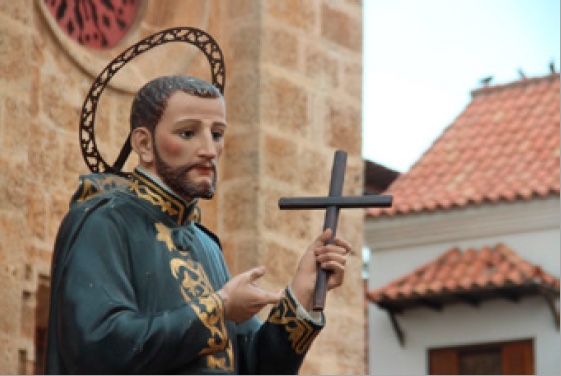
"The mother Church is a mature and missionary organization that thinks about the advent of the Christian faith in its own history and in connection with the Christian experience of its people. The Christian advent is unique. It took place in Palestine about two thousand years ago, and yet it is represented, in the life of the Church, through the presence of its saints, who are not only those placed on altars, but all those who have embodied faith in their lives." Image of St. Peter Claver in Cartagena de Indias.
Methol's interpretation of Latin American modernity
Methol's first thesis was that the start of modernity coincided with the discovery of America. America and the other world. With this discovery, the scope of the possible was indefinitely broadened and surpassed man's ability to see it all at once. Other men live in the new world. They are people like us, yet they are unavoidably other, different. The other is identical (as Borges had already noted), however, as soon as we say that the other is the identical one, the identical one stops being identical to what it was before. It is an identical one that is larger than it was, since it now contains within itself the ability to be another. Acknowledging the fact that indigenous people are people too requires changing the concept of humanity in order to also include American natives in it. Europeans were forced to change their understanding of themselves. They were required to change their self-consciousness. This shift in perspective, this rupture and broadening of scope, this new view of space, and this wider dimension of the human, become solidified in the culture of the Spanish Golden Age and in the Baroque.
Romanesque architecture inhabits a horizontal space that the human eye can see all at once, even when it is divided into three (or sometimes five) naves. The Church is the symbol of history moving toward Christ, who is on the altar. In the Gothic style, this perspective becomes vertical, centered on the intersection of the horizontal and the vertical perspectives. The Verb is present in history and also transcends it infinitely. We all find the Verb together as part of the Church; also, at the same time, we all have our own direct and personal relationship with the Verb in our own consciousness, in the intimacy of our own soul. The Baroque style complicates space, which can no longer be perceived all at once. The chapel, a small specific Church that comes together with the universal Church, gains much importance during this period. Humanity has a variety of paths toward Christ, who is the center of the cosmos and of history. There is the path of the conquistadors and that of the natives, but there are many others, all of which have parts of suffering and glory. The Church rules the fabric of the history of humanity, in which brothers fight one another and kill one another prior to acknowledging their brotherhood before the Mother, who suffers with each of them and accompanies them on their way to Christ, who reconciles them with the Father and with one another.
The Baroque is the art of complexity and contradiction, reconciled in a transcendent perspective. It is the art of creative disorder. It is the mestizo art that characterizes Latin America. The Baroque is Catholic modernity.
The Spanish Golden Age is also the second Spanish age of scholasticism, the invention of international law and the natural law of the peoples codified in the laws of the Indies, the start of modern economy in the reflections of Suárez and the Salamanca school...
However, this great start was interrupted at a certain point. Catholic modernity clashes with another modernity: Protestant modernity. In Methol's (rather one-sided) view, it is the forced rerouting of the different toward the identical. While the distinctive trait of Catholic America is mestizaje, racial admixture, the Baroque in which indigenous mythologies are represented in the redundant ornaments of cathedrals, with their demons and monstrous creatures, the key characteristic of Protestant America is the extermination of the natives, racial purity, the simplification of space and, ultimately, the reduction of identity from multiplicity to closed-down unity. Paradoxically, Protestant America attacked Catholic America by accusing it of destroying the Indies, for which the latter already feels responsible. That there is an element of truth in that black legend is undeniable. It is informed by Bartolomé de las Casas' Short Account of the Destruction of the Indies, which, despite some propagandistic exaggerations, contains many true elements regarding the atrocities and the injustices of the Conquest. Latin America had an atrocious beginning; later on, however, also due to de Las Casas' activities, there came the New Laws of the Indies and, above all, the Guadalupe event. The difficult and still unfinished path toward reconciliation had started. The genocide started, but was not completed. Protestant America lacked someone like de Las Casas who would speak out against the extermination of the natives, which started and was (practically) completed. Sadly, everyone knows the black legend but only a few know the true history!
The 16th and 17th centuries were times of struggle between Catholic and Protestant modernity. Ultimately, Catholic modernity was defeated, becoming subordinated to its adversary and accepting its view of history during its decadence. This subordination can take two forms: adapting to Protestant modernity or yielding it to one's rival, while also taking refuge in a reactionary rejection of modernity. Both alternatives entail giving up Catholic modernity. When anti-Catholic modernity is instituted in Spain with Napoleon, Latin America initiates its struggle for liberty and identity. This struggle is the most essential element for understanding Latin American history up to the present. The forces that become subordinated to anti-Catholic modernity tend to disaggregate Latin American identity into a disorganized plurality of states; in contrast, those that seek to safeguard the legacy of Catholic modernity support the notion of the “big Latin American homeland.”
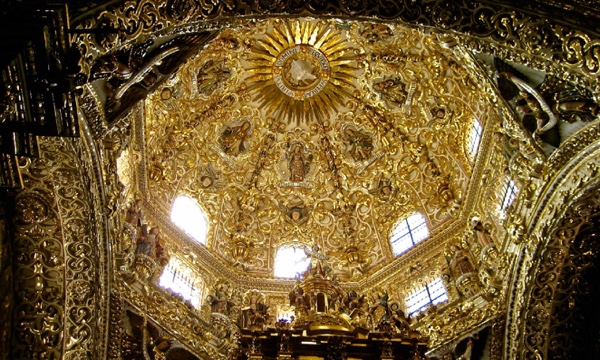
“The Baroque is the art of complexity and contradiction, reconciled in a transcendent perspective. It is the art of creative disorder. It is the mestizo art that characterizes Latin America. The Baroque is Catholic modernity”. Dome of the Chapel of the Rosary, Puebla, s. XVII
The Council and Latin American resurgence
Gradually, the Catholic Church (and Latin America along with it) moved toward an impossible choice: either give up modernity, locking itself up in a reactionary longing for an idealized Medieval age, or surrender to a modernity that was no longer Protestant, but secular, and that, towards its final stage, shifted from Protestant or secularized moralism to the mass liberalism of a permissive society.
The Second Ecumenic Vatican Council was, precisely, an attempt to evade that choice by reopening the path of “Catholic modernity” or that of “Catholics in modernity.” For this reason, the Council coincides with Latin America's great historical chance to reconquer its soul and its rightful place in world history. Conciliar renewal is the core element of the revolution that Latin America requires, not only to provide its impoverished masses with an acceptable level of material well-being, but also to reinforce our awareness of their human dignity and their Christian vocation.
Latin America needs a revolution, but... what kind of revolution does Latin America need? Alberto Methol found (through Del Noce) the word and the concept of the Resurgence (Risorgimento), to which he devoted a wonderful book: The Latin American Catholic Resurgence [El resurgimiento católico latinoamericano] (Interview with Alver Metalli, CSEO, 1983). The word “Revolution,” after the French Revolution and especially after the Russian one, came to represent a thorough break with the past and the goal of constructing a whole new society that human reason must derive only from itself. This complete break with the past was the utopia pursued by a branch of Enlightenment thought that intended to replace the transcendent redemption of Christianity with immanent salvation in history, under the banner of atheism. The idea of revolution was countered by the idea of the restoration of order after revolutionary chaos.
After the fall of the Napoleonic empire came the restoration that so many (especially the young) had longed for; however, its supporters soon came to dislike it. The restored order was a hypocritical one in which eternal values were instrumentalized to defend an obsolete social order. This is how the idea of the Resurgence was born. The Resurgence is the Restoration of permanent values derived from the criticism of aging, inadequate, or even corrupt social and historical structures that can be used to manipulate values in certain historical phases with a view to protecting situations of privilege and social injustice. The Resurgence opposes both the Revolution and the Restoration.
The Resurgence is also marked by the conviction that history has multiple levels: political history is the most superficial, beneath which economic history constitutes a more fundamental level. In any case, the deepest level is that of religious self-consciousness, a people's perception of its relationship with God and therefore of the relationships among men. For this reason, the Christian faith creates a people. This creation should not be regarded as an intellectual and abstract notion; instead, it is a decisive factor in the process whereby a people is formed. This is why Methol liked the idea that “communion is liberation.” Christian communion is the proper subject of the praxis of liberation, therefore, even without any clericalism, Christianity is intrinsically political. Discovering Christ as my own identity also entails acknowledging that I am part of those who, like myself, confess that Jesus is the Lord. This links us in such an intimate way that we are all one. The Catholic Resurgence begins with ecclesial renewal. This is not a political event as such, but the fountainhead that originates the possibility of visualizing a qualitatively different political praxis, the political praxis of the Latin American Catholic Resurgence.
Thus, the Second Ecumenic Vatican Council is a process that goes from Medellín to Puebla and then to Aparecida del Norte; it is the source of the Latin American Catholic Resurgence. The Church does not participate in politics, but it must take responsibility for educating the consciousness of nations, for educating men so they can learn how to be part of a nation.
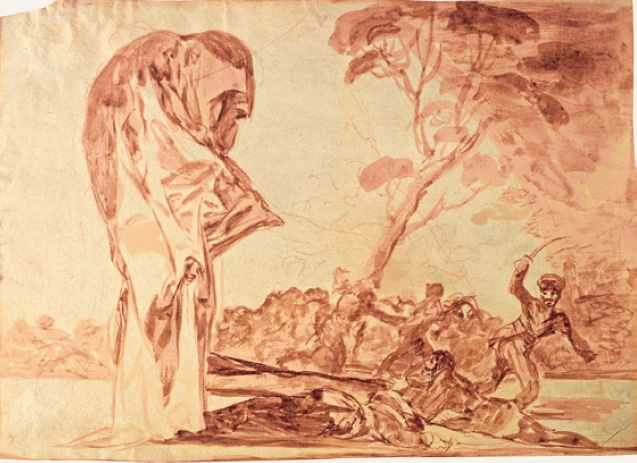
After the fall of the Napoleonic empire came the restoration that so many (especially the young) had longed for; however, its supporters soon came to dislike it. The restored order was a hypocritical one in which eternal values were instrumentalized to defend an obsolete social order. This is how the idea of the Resurgence was born. The Resurgence is the Restoration of permanent values derived from the criticism of aging, inadequate, or even corrupt social and historical structures that can be used to manipulate values in certain historical phases with a view to protecting situations of privilege and social injustice. The Resurgence opposes both the Revolution and the Restoration." Image: Francisco de Goya, Folly of Fear [Disparate de miedo], circa 1819.
Problems
How many of these ideas remain present in the reflections of Jorge Mario Bergoglio? To what degree have they been reshaped? Given that he is certainly an original thinker, these are hard questions. It is clear that these ideas and Methol's methods are underlying elements in the thought of the Latin American Pope as a result of their long friendship and because they reflect the reality of today's world with remarkable accuracy. The method is the same as that of John Paul II: to think about history from the perspective of its central point, which is Jesus Christ.
We live in a time when the Church is globalizing. Two thirds of all Catholics live neither in Europe nor in the USA; they are from the area once called the Third World and nearly half are Latin American. Some lament the fact that this situation is not framed in terms of the “defense of the West.” We do not know whether the West is still Christian, but we do know that Christianity largely surpassed the boundaries of the West. The current state of affairs resembles that of the Middle Ages, when the Germans converted and the Pope began to consider not only the Latin and Greek perspectives, but also the German one. The Church paid dearly for this epochal change with the schism between the Greek and the Latin Church. Actually, this schism affected a Latin Church, which had also come to be Germanic due to the conversion of the barbarians, and a Greek Church, which did not wish to change in response to this new context. How to guide the Church as it enters this new age? Western Christianity has formulated aspects of the faith and the doctrine which have permanent validity, along with others whose value is linked to historical settings and the peculiarities of the Western character. How to distinguish the permanent from the historically contingent and reformulate Christian values for them to be more easily assimilated by new cultures? Possibly, the first stage will require broadening the concept of the West so that the cultural context matches the geographical one, encompassing Latin America.
We have already pointed out that Methol, rather than a system, provides a method to think about history. Of course, those who intend to continue interpreting history must reflect on certain additional topics.
Methol stresses the essential differences between Catholic modernity and Protestant Modernity, leaving out an ecumenical perspective. Nowadays, it would be necessary to ponder the failure of these two modernities, given that Protestant modernity has been defeated and has become the opposite of what it once was. This is the root of postmodernity. Maybe the defeat of both modernities was caused, precisely, by their separation, and the path of Christians in modernity can only be resumed through the ecumenical reconciliation of these two approaches. As far as I know, this topic was not originally covered by Methol Ferré. In fact, it was developed by Pope Francis, as shown by his address on the 5th centenary of the Reformation, and it would be interesting to explore its origin. Another point that warrants exploration is the topic of the market. I think Methol's views represent Christian socialism. The Christian community is the proper subject of the socialist economy. More specifically: the community of workers, encouraged by faith, is able to create a new egalitarian economic structure. In contrast, according to the Puebla theology, that of Argentinians, faith creates (helps create) not so much the community of workers but rather the community of nations. Pope Francis then refers to social market economy. The creative role of the free market appears to gain much wider recognition. Beyond the social market economy approach (which is certainly not regarded as a formula that can be mechanically transposed to socioeconomic contexts different from those where it emerged), one topic remains open: the alliance between free market and solidarity, present in multiple forms and with various emphases from Centesimus annus through to Laudato si’. I never had the chance to bring together Alberto Methol and Michael Novak, another of my great friends. I am sure that they would have been deeply interested in this issue, as well as in the notion that business creativity and the shared responsibility of the community of workers must be merged to inform the future developments of Christian Social doctrine.
Like all living thought, Methol Ferré's requires not mechanical repetition but creative reinterpretation in the present context. Reviewing his thought can be a key aid to understanding the threats, opportunities, and challenges of this period of Church and world history, in the era of the first Latin American pontificate.
Article by Rocco Buttiglione.

